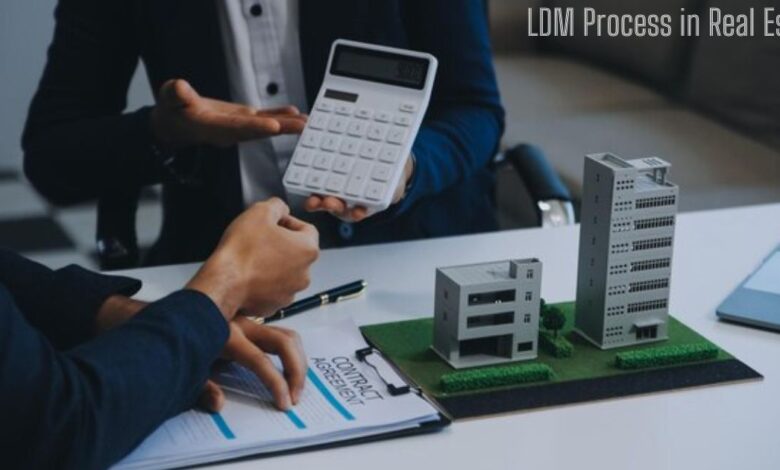LDM Process in Real Estate: A Comprehensive Guide

The real estate industry is one of the most dynamic sectors, constantly evolving with new strategies and processes. One such integral aspect in this field is the LDM process in real estate. Whether you’re an investor, developer, or enthusiast, understanding the LDM (Land Development Model) process can be a game-changer. This model helps streamline various stages of property development, making it easier to manage land projects efficiently. Let’s delve into the details of this process and understand its importance in real estate.
Understanding the LDM Process in Real Estate
The LDM process in real estate refers to a systematic approach towards land development, primarily focused on enhancing the value and usability of a plot of land. This model involves a step-by-step methodology that guides stakeholders through each phase of land development, from planning to execution. It is designed to help real estate professionals make informed decisions, optimize costs, and maximize returns on their investments.
Key Stages of the LDM Process in Real Estate
The LDM process in real estate is not just about acquiring land; it encompasses a series of well-defined stages that ensure successful development. Here are the key stages involved:
Feasibility Analysis and Market Research
The first and most crucial step in the LDM process in real estate is conducting a feasibility analysis. This involves studying the potential of a particular land plot and its alignment with the current market trends. Real estate developers focus on identifying if the project is viable in terms of location, demand, competition, and target market. They conduct in-depth research to gather insights on demographic trends, local regulations, and market demands. This phase forms the foundation of the LDM process by establishing a clear understanding of the land’s potential.
Land Acquisition and Due Diligence
Once the feasibility analysis yields positive results, the next step is acquiring the land. Land acquisition in the LDM process in real estate involves identifying and purchasing the plot that meets the project’s requirements. Due diligence plays a key role here, ensuring the property is legally sound, free from disputes, and has clear ownership. Legal assessments, title verification, and understanding local zoning laws are critical to avoiding any complications later in the development stage.
Strategic Planning and Design
After acquiring the land, strategic planning takes the lead. This involves conceptualizing the project, setting goals, and creating a detailed development plan. The planning stage in the LDM process in real estate includes considering environmental factors, land use patterns, infrastructural requirements, and architectural design. This phase is pivotal as it shapes the overall vision of the project. Real estate developers often work with architects, planners, and engineers to create a blueprint that aligns with the market’s needs and maximizes the land’s potential.
Securing Approvals and Permits
Navigating legal requirements is an essential part of the LDM process in real estat’e. This phase involves obtaining necessary approvals from local authorities, government bodies, and regulatory agencies. These include building permits, environmental clearances, zoning changes, and utility connections. Securing these permits ensures the project adheres to the regulatory framework, preventing legal complications during construction.
Infrastructure Development and Site Preparation
With all the necessary approvals in hand, the next step in the LDM process in real estat’e is infrastructure development. This stage involves preparing the site for construction by implementing essential infrastructure such as roads, drainage systems, electricity, water supply, and waste management. Site preparation is vital for creating a conducive environment for the project’s future construction activities.
Construction and Execution
Once the infrastructure is in place, the actual construction phase begins. This is where the LDM process in real estat’e sees the project come to life. The construction phase involves building structures, including residential or commercial properties, recreational facilities, landscaping, and more. Real estate developers closely monitor progress to ensure that the construction aligns with the initial plan and quality standards.
Marketing and Sales Strategy
An essential aspect of the LDM process in real estat’e is implementing a strong marketing and sales strategy. This phase focuses on creating awareness, generating leads, and converting potential buyers. Real estate developers utilize various marketing channels, such as digital platforms, social media, and traditional methods, to promote their projects. A well-executed marketing plan plays a significant role in boosting the project’s success.
Final Inspections and Quality Assurance
Before the project is handed over to buyers or tenants, final inspections are conducted. This step in the LDM process in real estat’e ensures that the project meets quality standards and complies with regulatory norms. It involves inspecting the built structures, checking safety measures, and verifying that all legal requirements have been fulfilled. Quality assurance is crucial for establishing the developer’s credibility and ensuring customer satisfaction.
Handover and Property Management
The last stage of the LDM process in real estat’e involves the handover of the property to the buyers or tenants. This is where real estate developers transfer ownership and complete the necessary documentation. Effective property management services are also established at this stage, including maintaining common areas, security, and other amenities. A smooth handover enhances the project’s reputation and client satisfaction.
Importance of the LDM Process in Real Estate
The LDM process in real estat’e holds significant importance as it streamlines land development activities, minimizes risks, and maximizes returns. It allows developers to approach projects methodically, ensuring each step is completed efficiently. This systematic approach also helps developers maintain quality standards, comply with legal requirements, and achieve their financial goals.
Challenges in Implementing the LDM Process in Real Estate
While the LDM process in real estat’e is highly beneficial, it is not without challenges. Developers may face issues like rising land prices, delays in securing permits, changes in market demand, and unexpected construction costs. Effective risk management strategies and contingency planning can help mitigate these challenges, ensuring successful project completion.
Conclusion
The LDM process in real estate is a comprehensive approach that guides developers through the complexities of land development. By focusing on strategic planning, legal compliance, quality construction, and effective marketing, developers can achieve success in their projects. Understanding and implementing this process is essential for real estate professionals looking to thrive in this dynamic industry.
FAQs
What does the LDM process in real estate involve?
The LDM process involves stages such as feasibility analysis, land acquisition, planning, construction, and marketing, focusing on systematic development.
Why is the feasibility analysis important in the LDM process?
Feasibility analysis helps developers assess land potential, market trends, and project viability, forming the foundation of the LDM process.
What are the challenges faced in the LDM process in real estate?
Common challenges include rising costs, delays in approvals, market fluctuations, and unexpected construction hurdles.
How does securing approvals benefit the LDM process?
Securing approvals ensures compliance with local regulations, preventing legal issues and ensuring smooth project execution.
How does the LDM process impact real estate projects?
The LDM process provides a systematic approach, enhancing planning, execution, quality, and profitability in real estate projects.




One Comment